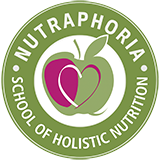In the world of holistic nutrition, one of the simplest ways you can support your health is to aim to eat in harmony with the seasons. This timeless approach, rooted in traditional wisdom and supported by modern nutritional science, can help your body to align with nature’s rhythms. Seasonal eating can enhance vitality, improve digestion and immune function, and naturally bring more variety and nutrient-density to your meals.
In today’s blog, we’ll explore how seasonal eating can support your body, and how you can embrace it to feel your best, all year long.

What Does It Mean to Eat Seasonally, and Why Does It Matter?
Eating seasonally means choosing foods that are naturally grown and harvested during the current time of year in your region. It’s a way of eating where the intention is to reflect the natural growing cycles of fruits, vegetables, and even some animal products. Rather than relying on produce that has been shipped long distances (which likely means it was picked before it was ripe and it sat in transit for weeks) or grown out of season using artificial methods, seasonal eating invites you to enjoy what nature is offering in your local region right now, at its most peak state of ripeness.
In practice, this might look like enjoying crisp apples and hearty root vegetables in the fall, reaching for citrus fruits and dark leafy greens in the winter, incorporating tender greens and fresh herbs in the spring, and savouring juicy berries and tomatoes in the summer. It also means listening to the cues your body gives you throughout the year. You might notice a natural desire for warm, grounding meals in the colder months and lighter, more refreshing and hydrating foods as the temperature rises and your body requires more electrolytes. In this way, seasonal eating can also align with intuitive eating.
Seasonal, local eating supports both variety and freshness in your diet, it helps local farmers, and it lowers your environmental footprint. Most importantly, it gives your body a more notable percentage of the nutrients it needs to stay nourished and balanced throughout the year, because the foods you are consuming were likely picked not long before you purchased them. This is especially true if you shop at your local farmer’s market.
Eating seasonally also invites diversity into your meals. Instead of sticking to the same few foods year-round, you’re naturally rotating ingredients, which helps support a well-rounded and resilient microbiome. When you eat locally-grown foods, you’re also taking in a small part of the microbial life from the soil in your region. This connection to your local environment can strengthen your gut health, support immune resilience, and create a more adaptive, diverse internal ecosystem. In many ways, eating locally and seasonally is not just nourishment for your body, it is also a way to harmonize with the land around you.

Your Seasonal Eating Guide: A Month-by-Month Produce Breakdown
When you begin to eat seasonally, you’ll quickly start to notice how nature provides exactly what your body needs through different times of the year. Spring provides us with cleansing greens, summer offers hydration and antioxidants, fall delivers grounding root vegetables, and winter provides warming, immune-supportive foods. Nature is truly remarkable in this way, and we’re deeply connected to its seasons and cycles!
Keep in mind that seasonal availability can vary slightly depending on your climate and region. This guide offers a general overview based on temperate zones and is meant to inspire mindful, localized choices. To find out more about what is in season in your region, keep an eye on your local farmers’ markets and get to know the farmers in your area.
Let’s take a closer look at what’s in season each month so you can start building your meals around what nature is offering right now.

Spring is a time of renewal, growth, and gentle detoxification. As the days grow longer and temperatures begin to rise, your body naturally shifts gears after the slower, heavier rhythms of winter. This seasonal transition invites a lighter way of eating that supports the liver and lymphatic system, both of which play a vital role in detoxification and overall vitality.
Many people notice a craving for crisp, fresh foods during this time, and this is no coincidence! Spring produce tends to be water-rich, fiber-packed, and full of phytonutrients that help flush toxins, reduce inflammation, and re-awaken digestion. Bitter greens in particular help stimulate bile flow and gently support the liver, while early spring herbs provide a mineral-rich boost after a nutrient-depleted winter.
March
Vegetables: Spinach, radishes, leeks, artichokes, arugula, asparagus, endive, chives, spring onions, mustard greens, watercress, dandelion greens, bok choy, fennel
Fruits: Lemons, oranges, grapefruits, late-season apples, rhubarb, kiwi, early strawberries, mandarins, blood oranges, tangelos, dates
April
Vegetables: Asparagus, peas, lettuce, watercress, green garlic, beets, carrots, spring onions, sorrel, Swiss chard, baby kale, radishes, turnip greens, new potatoes
Fruits: Strawberries, rhubarb, kiwi, pineapple, late-season citrus, loquats, mangoes, guava, early cherries, apricots
May
Vegetables: Artichokes, sugar snap peas, arugula, cucumbers, celery, romaine, endive, fava beans, scallions, zucchini, green beans, radicchio, baby beets, broccoli
Fruits: Strawberries, cherries, apricots, nectarines, loquats, early blueberries, cantaloupe, mangoes, plums, mulberries
Tip: Start your mornings with warm lemon water to awaken digestion and promote gentle detoxification.

Summer is a time of abundance, energy, and vibrancy. As the sun shines bright and temperatures reach their peak, your body craves cooling, hydrating, and nutrient-dense foods that support your resulting increase in activity. This season is all about replenishment, keeping your body hydrated, energized, and balanced through your warmest, most active months of the year.
The summer months bring an abundance of fruits and vegetables that are high in water content, electrolytes and natural sugars that help keep you hydrated. As the body works harder to stay cool, it requires foods that are lighter, easier to digest, and rich in antioxidants to combat the oxidative stress caused by increased sun exposure and activity. Watermelon, cucumbers, and berries are all perfect choices to fuel your body without weighing it down.
June
Vegetables: Zucchini, summer squash, cucumbers, eggplant, green beans, okra, corn, bell peppers, tomatoes, radishes, lettuce, kale, carrots, beets, snap peas
Fruits: Cherries, strawberries, blueberries, raspberries, blackberries, peaches, nectarines, apricots, melons, plums, figs, mangoes, early grapes
July
Vegetables: Corn, tomatoes, bell peppers, cucumbers, eggplant, zucchini, green beans, okra, Swiss chard, collards, purslane, hot peppers, scallions, garlic, amaranth greens
Fruits: Peaches, nectarines, plums, berries, melons, figs, grapes, cherries, apricots, lychee, mangoes, pears, papayas
August
Vegetables: Tomatoes, eggplant, corn, bell peppers, cucumbers, zucchini, green beans, okra, radishes, celery, kale, swiss chard, broccoli, carrots, beets
Fruits: Peaches, nectarines, plums, melons, figs, grapes, apples, pears, berries, passion fruit, pomegranates, guava, bananas, mangoes
Tip: Enjoy lightly grilled or raw dishes to keep enzymes intact and to keep meals refreshing and easy to digest.

Fall is a season of transformation, grounding, and introspection. As the leaves change and temperatures begin to drop, your body naturally shifts from the lightness of summer to the comfort of heartier, more sustaining foods. Fall invites us to slow down, restore our energy, and prepare for the colder months ahead.
This time of year brings an abundance of root vegetables, squashes, and hearty greens, which provide the warmth, grounding, and support that our bodies need as they transition into cooler weather. These foods are rich in complex carbohydrates, prebiotic fibres, and essential vitamins that help stabilize blood sugar levels and support both digestion and immunity. The hearty nature of fall produce, such as sweet potatoes and winter squash, helps to fuel the body with the energy it needs to stay strong during the coming winter.
September
Vegetables: Sweet potatoes, squash, kale, collards, beets, carrots, cauliflower, cabbage, broccoli, turnips, green beans, onions, garlic, mushrooms, celery root
Fruits: Apples, pears, grapes, pomegranates, plums, figs, late-season peaches, quinces, cranberries, persimmons, nectarines, passion fruit, prickly pear
October
Vegetables: Pumpkins, butternut squash, acorn squash, kale, collards, brussels sprouts, sweet potatoes, carrots, beets, leeks, turnips, fennel, rutabaga, cauliflower
Fruits: Apples, pears, cranberries, figs, pomegranates, grapes, persimmons, dates, early citrus, kiwifruit, medlar, elderberries
November
Vegetables: Winter squash, sweet potatoes, Brussels sprouts, cabbage, leeks, carrots, beets, parsnips, turnips, rutabagas, celery root, onions, garlic, mushrooms, kale
Fruits: Apples, pears, cranberries, pomegranates, oranges, tangerines, persimmons, dates, kiwi, lemons, quinces, early mandarins, satsumas
Tip: Try roasted veggie bowls and cozy soups to warm the body as you transition into the cooler months.

Winter is a time of rest, stillness, and deep nourishment. As the earth slows down and temperatures drop, our bodies naturally crave warming, nutrient-dense foods that provide comfort, support immunity, and help maintain energy during these colder months. It’s a season to focus on strengthening and restoring, as the body requires more care and attention to stay balanced in the face of harsher weather.
The foods available in winter tend to be heartier, packed with vitamins, minerals, and antioxidants that fortify the immune system and nourish the body’s deeper needs. Root vegetables, winter squashes, and dark leafy greens help provide the grounding energy we need, while citrus fruits and pomegranates offer a refreshing burst of vitamin C to combat colds and boost vitality. Winter is also the season for slow-cooked meals that nourish from the inside out, warming you with every bite.
December
Vegetables: Cabbage, Brussels sprouts, sweet potatoes, winter squash, kale, collards, turnips, leeks, parsnips, carrots, onions, garlic, radicchio, chicory, fennel
Fruits: Oranges, grapefruits, mandarins, tangerines, lemons, limes, pomegranates, apples, pears, persimmons, cranberries, dates, kumquats
January
Vegetables: Cabbage, kale, collards, leeks, parsnips, turnips, rutabagas, sweet potatoes, winter squash, garlic, onions, beets, endive, fennel, radishes
Fruits: Oranges, grapefruits, lemons, limes, mandarins, tangerines, pomelos, apples, pears, persimmons, pomegranates, kiwi
February
Vegetables: Kale, collards, cabbage, leeks, onions, garlic, parsnips, rutabagas, turnips, carrots, sweet potatoes, chicory, fennel, endive, radishes
Fruits: Oranges, grapefruits, lemons, limes, mandarins, pomelos, tangerines, apples, pears, kiwi, dates, late-season pomegranates
Tip: Focus on cooked meals over raw, and aim for more protein and healthy fats to keep you energized.

Final Thoughts
Seasonal eating is a form of self-care. Tuning into seasonal foods can help to connect you with your environment, with nature, and with your body’s unique, changing needs. It’s a gentle but powerful form of intuitive eating that encourages presence, variety, and alignment with nature’s wisdom.
Wherever you are on your wellness journey, try incorporating more local, seasonal produce into your meals. Your body (and taste buds) will thank you!

Ready to Dive Deeper?
If you’re excited about learning how to nourish your body year-round with the wisdom of seasonal eating and holistic nutrition, our Tier 1 Holistic Nutrition & Health Coach diploma program is the perfect place to start. This foundational course dives into the principles of holistic nutrition, teaching you how to align your diet with nature’s rhythms, support your health with nutrient-dense foods, and build a strong foundation for a lifelong wellness journey.
Whether you’re just beginning or you’re looking to deepen your understanding, the Tier 1 program will equip you with the knowledge and tools to transform your health and the health of others. Begin your holistic nutrition journey today and discover how you can integrate these powerful, nourishing practices into your life.
Do you try to eat with the seasons in your home? What’s your favourite seasonal recipe or go-to farmer’s market find? Share it with us over on Instagram. We’d love to be inspired by you!


